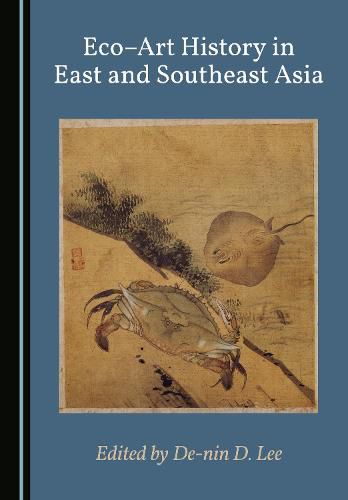Readings Newsletter
Become a Readings Member to make your shopping experience even easier.
Sign in or sign up for free!
You’re not far away from qualifying for FREE standard shipping within Australia
You’ve qualified for FREE standard shipping within Australia
The cart is loading…






The essays in this anthology examine artwork and sites in East and Southeast Asia through the lens of eco-art history. In these regions, significant anthropogenic changes to terrain, watercourses, and ecosystems date back millennia, as do artwork and artefacts that both conceptualize and modify the natural world. The rising interest in earth-conscious modes of analysis, or eco-art history, informs this anthology, which explores the mutual impact of artistic expressions and local environments in East and Southeast Asia. Moreover, conceptual tools and case studies focused on these regions impart important insights bearing on the development of eco-art history.The book includes case studies examining the impact of the Little Ice Age on court painting and systems of representing marine life in the Joseon period in Korea. Other contributors consider contemporary artistic strategies, such as developing a sustainability aesthetics and focusing attention to non-human agents, to respond to environmental damage and climate change in the present. Additional essays analyse the complicated art historical ecology of heritage sites and question the underlying anthropocentrism in art historical priorities and practices. As a whole, this anthology argues for the importance of ecological considerations in art history.
$9.00 standard shipping within Australia
FREE standard shipping within Australia for orders over $100.00
Express & International shipping calculated at checkout
The essays in this anthology examine artwork and sites in East and Southeast Asia through the lens of eco-art history. In these regions, significant anthropogenic changes to terrain, watercourses, and ecosystems date back millennia, as do artwork and artefacts that both conceptualize and modify the natural world. The rising interest in earth-conscious modes of analysis, or eco-art history, informs this anthology, which explores the mutual impact of artistic expressions and local environments in East and Southeast Asia. Moreover, conceptual tools and case studies focused on these regions impart important insights bearing on the development of eco-art history.The book includes case studies examining the impact of the Little Ice Age on court painting and systems of representing marine life in the Joseon period in Korea. Other contributors consider contemporary artistic strategies, such as developing a sustainability aesthetics and focusing attention to non-human agents, to respond to environmental damage and climate change in the present. Additional essays analyse the complicated art historical ecology of heritage sites and question the underlying anthropocentrism in art historical priorities and practices. As a whole, this anthology argues for the importance of ecological considerations in art history.